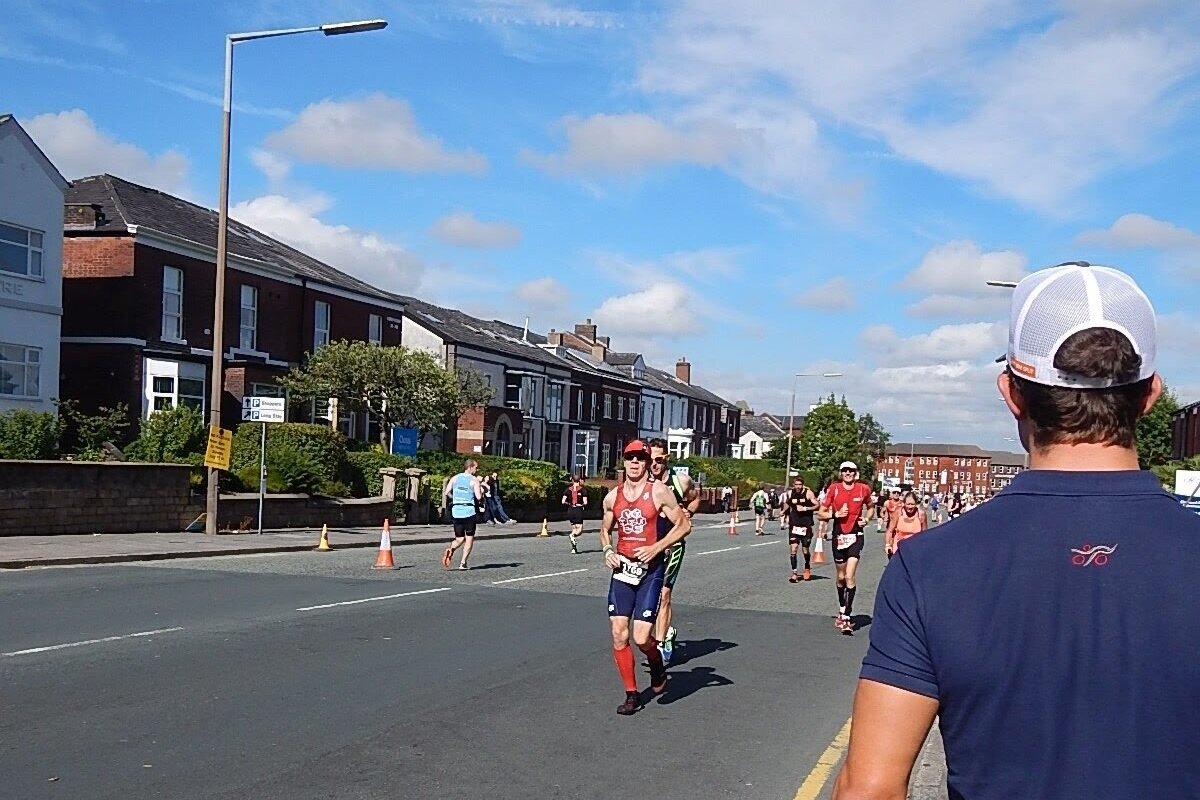Putting together your run-walk strategy for a marathon or IRONMAN Marathon
Read on to find out how to manage your run-walk strategy to ensure a successful completion without burning matches unnecessarily. Tim Ansell provides a solution to creating your best race approach to run-walking a marathon and getting to that finish line.
If you’ve ever done an IRONMAN or any long-distance triathlon, you’ll know how hard the marathon run feels. Even if you’ve only watched one, you’ll still have some idea. You’ll have seen plenty of athletes broken and walking, or shuffling at best. A lot of this comes down to what have you practised in training, does this match with your strategy. In our opinion, you will need a couple of strategies in the event of…. Something will come at you left field at some point during the race that you weren’t expecting and you need to be mentally strong enough to make an informed decision to keep your race on the rails!
Run pacing typically mimics the same pattern as the bike. Effort and speed are managed over the four quarters, get used to chunking down the race and the three disciplines. The first of which begins with the last few miles of the bike, this marks the start of the run. The preparation and the mindset here will assist you in the transition to optimal running form. Together with the additional focus, this should be given to the first couple of miles in the run leg. Pause the effort for the moment, focus on the running cues that we’ve all heard at the coaching sessions. Run tall and proud, remain loose and supple and keep those quick feet landing under the hips. These are examples of form-based running cues that can help you find good running more quickly.
Once you have found your running form and rhythm, you can build your effort up to a sustainable, strong pace. The middle two-quarters of the run are more about this sustainable effort and maintaining the good form reminding yourself of those running cues. This isn’t easy, and you shouldn’t be losing pace or form in this stage of the race.
The final stage of the race, you can now look to chase a strong finish, leave it all out there on the road. If you have the capacity to increase the effort and pace, you have probably been listening to your body, stick to your strategy. You have the courage to push harder as you have practised this in your training time after time! As a well trained and well-prepared athlete, you can execute a great pacing and race strategy.
So, how many of you can execute a race like the above, not too many we should imagine. As age-groupers or weekend warriors, how else can a run strategy be executed to maximise the effort and also help to reduce injury fatigue?
Decide what your strategy is going to be before race day and practise it in training. For beginners, who are worried they might not make the distance, again chunk it down with measured walk breaks. Often IRONMAN athletes end up running faster overall because they don’t fall apart late in the race and end up walking a portion of the run. Attempt timing it strategically around the aid stations, this will allow you to eat and drink more easily. You will also be able to control your heart rate.
Those of you that lack endurance due to injury or not being able to be consistent with your training will benefit from a run-walk strategy. You can take on more fluid and nutrition; you can reduce the fatigue and painful legs resulting in non-stop running. You can distribute the energy expenditure better with a run-walk strategy.
An example of a run-walk strategy: as above, start the preparation on the bike and the mindset getting ready for the transition to optimal running form :
5min run at 11:00 mile pace. Looking to establish good form remember the running cues.
2min walk with purpose. Not strolling, but walking with good posture and driving the arms, strides etc.
3min run at 11:00 mile pace. Return to running your best form at a consistent pace and effort. Trying to maintain as many elements of great form as you can maintain at the 11:00min per mile pace.
There are many ways of chunking the run element of the race, a few more :
5-minute run followed by a 1-minute walk
5k run followed by a 1k walk.
If the aid stations are an even distance apart, you could run to the aid stations walk through them, eating and drinking, while maintaining good posture then resume running.
And so on...
You can adjust the pacing to meet your own needs and goals.
Not every race is going to be perfect. However, the better prepared you are the best you will be on the day.
We’re here to help
Tri Training Harder are one of the leading Triathlon coaching providers in the UK, using our wealth of experience to unite scientific and technological research with already well-established and successful best practices, to create a formula for triathlon and endurance coaching that works.
The result is an honest, dynamic, yet simple new way of constructing an athlete’s training to allow them to reach their potential.
If you’re planning your next season, just starting out in the sport or are looking for extra guidance at the very top end of the field, we are here to help, and our coaches would be delighted to hear from you. You can contact us via the website, and one of the team will be in touch.

